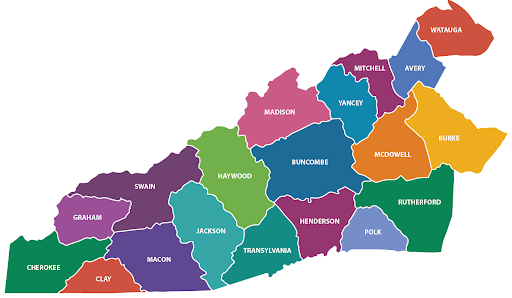Western NC Research
How do residents of Western North Carolina (WNC) get the news and information they need? Where are the gaps? What issues matter to different communities? What challenges do they face? The WNC Research and Community Listening Project was a year-long study aimed at finding answers to those questions and helping local news organizations address community needs. Conducted by researcher Brenda Murphree over the course of a year, the Workshop learned about the news and information needs of people in diverse communities across the region, with specific focus on communities of color, Spanish-speaking communities, Indigenous communities, people in rural areas and people of low-income backgrounds. The Workshop is using the insights gained from this research to support WNC-based local news and information organizations and to build collaborative reporting efforts to address community information needs.
About the Geographic Area of Focus
North Carolina’s mountain region, known as Western NC, is variously identified as comprising between 16 and 19 counties. For this study, we have defined the WNC region as including the following 19 counties: Avery, Buncombe, Burke, Cherokee, Clay, Graham, Haywood, Henderson, Jackson, Macon, McDowell, Madison, Mitchell, Pol, Rutherford, Swain, Transylvania, Watauga and Yancey.
All of these counties except two – Buncombe and Henderson – are considered rural, based on population density per square mile. Twelve have a density of less than 100 persons per square mile, and several of those have less than 30.


